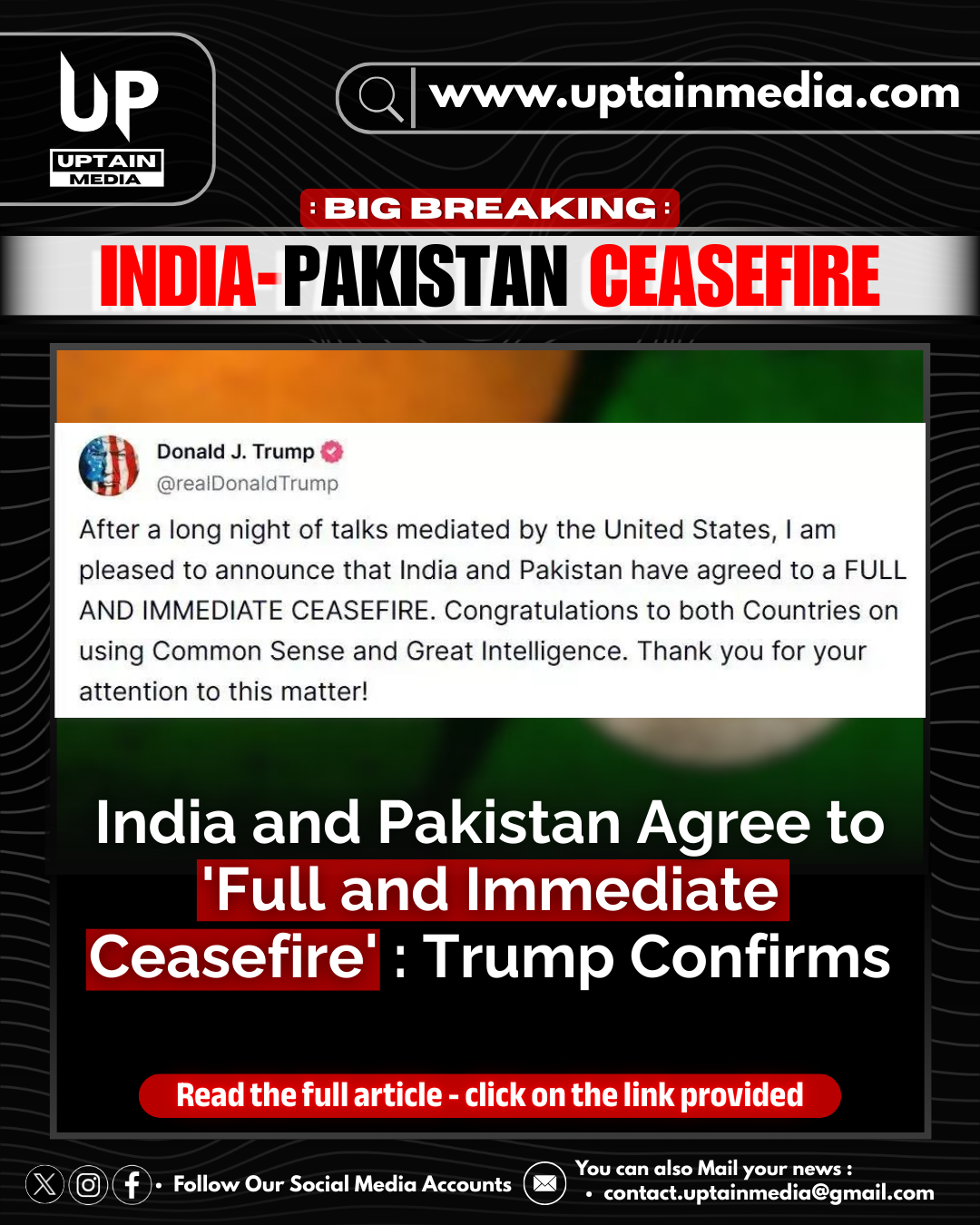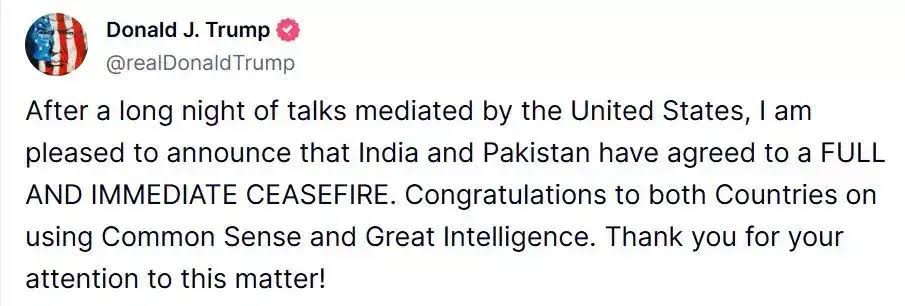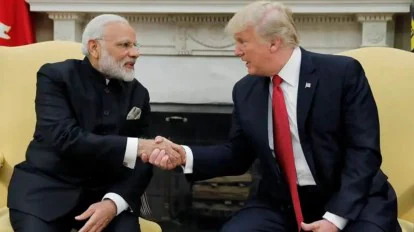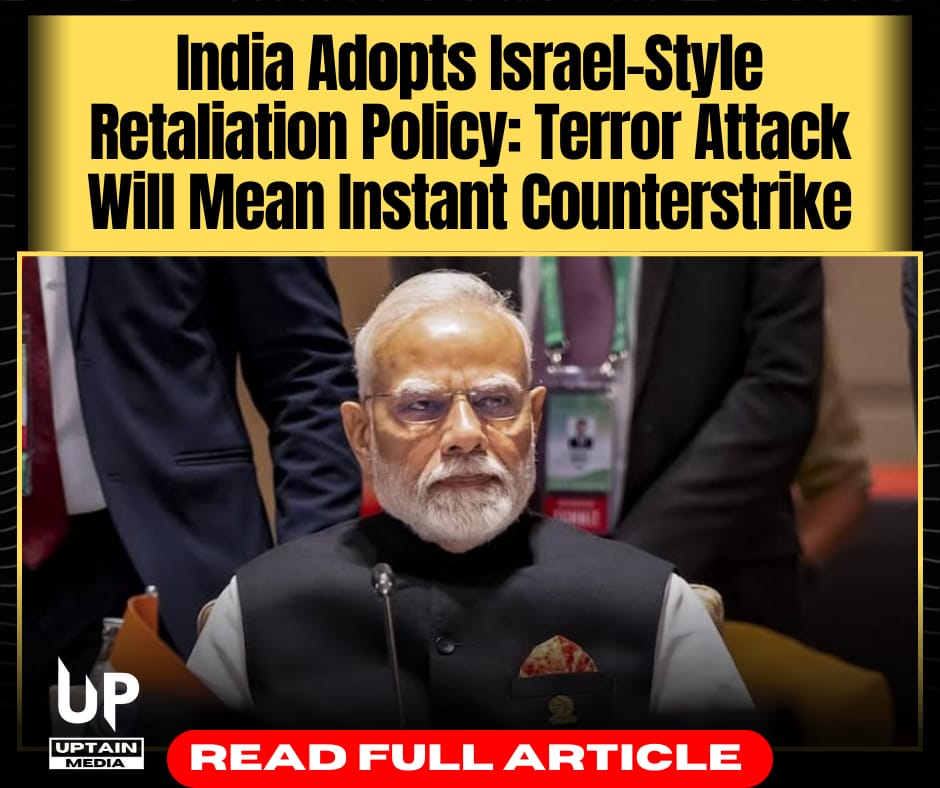
India and Pakistan Agree to ‘Full and Immediate Ceasefire’
In a significant diplomatic breakthrough, India and Pakistan have agreed to a full and immediate ceasefire, following intense backchannel negotiations brokered by the United States. The announcement, made by former U.S. President Donald Trump, comes in the wake of rising tensions triggered by the deadly Pahalgam terror attack and India’s bold retaliation through Operation Sindoor.

Quick Read:
- Ceasefire Announcement: Made by Donald Trump via Truth Social
- Mediator: United States
- Timing: Follows major escalation between India and Pakistan
- Trigger Event: April 22 terror attack in Pahalgam, J&K (26 killed)
- India’s Response: Operation Sindoor – strikes on 9 terror camps
- Casualties Reported: Over 100 terrorists killed (Govt. sources)
- Key Targets: Lashkar HQ in Muridke, Jaish base in Bahawalpur
- Pakistan’s Confirmation: Ceasefire acknowledged by FM Ishaq Dar
- Tone of Messaging: Peace with commitment to sovereignty
- Global Significance: Signals cooling tensions after near-conflict

In a moment that could mark a turning point in South Asian geopolitics, India and Pakistan have agreed to a full and immediate ceasefire, bringing a sudden pause to what many feared could spiral into deeper conflict. The news was shared publicly by former U.S. President Donald Trump in a late-night post on Truth Social, confirming successful U.S.-mediated talks between the two rival nations.
“After a long night of talks mediated by the United States, I am pleased to announce that India and Pakistan have agreed to a FULL AND IMMEDIATE CEASEFIRE,” Trump posted.
The ceasefire comes on the heels of a tense and bloody standoff sparked by the April 22 terrorist attack in Pahalgam, where 26 people lost their lives, including a Nepali national. The attack sent shockwaves across the nation and provoked a swift and assertive military response from India in the form of Operation Sindoor.
Operation Sindoor: A Game-Changer
India’s military action under Operation Sindoor targeted nine terrorist bases spread across Pakistan and Pakistan-Occupied Kashmir. Among the most prominent targets were:
- Muridke, the base of Lashkar-e-Taiba, a group long accused of orchestrating attacks on Indian soil.
- Bahawalpur, the stronghold of Jaish-e-Mohammed, linked to several high-profile terror incidents over the past two decades.
According to Indian government sources, over 100 terrorists were neutralized in the operation. The precision strikes, which avoided Pakistani military infrastructure, were lauded for their focused and non-escalatory approach, even as they delivered a powerful message.
“Our actions have been focused and measured,” the Defence Ministry had stated.
“We did not target any Pakistani military assets.”
Pakistan Responds
Shortly after Trump’s announcement, Pakistan’s Foreign Minister Ishaq Dar echoed the sentiment, tweeting that the ceasefire had indeed been agreed upon by both sides.
“Pakistan and India have agreed to a ceasefire with immediate effect,” he posted.
“Pakistan has always strived for peace and security in the region, without compromising on its sovereignty and territorial integrity.”
This dual confirmation signals a rare moment of diplomatic alignment between the two nuclear-armed neighbours who have historically shared a tense, and often violent, relationship.
The Role of the United States
While Washington’s influence in South Asia has often been viewed with skepticism, this development underlines the diplomatic leverage the U.S. can still exert in defusing regional crises. Though no official statement has yet been made by the current U.S. administration, Trump’s direct involvement suggests behind-the-scenes negotiations may have been ongoing for days.
Why This Ceasefire Matters
This is not just another ceasefire agreement. It follows an era of steadily worsening relations marked by multiple border skirmishes, trade suspensions, and diplomatic breakdowns. What makes this moment particularly significant is:
- The recent scale of military engagement from both sides.
- Global concern over two nuclear nations engaging in direct confrontation.
- Willingness on both fronts to pause and de-escalate—however temporary it may be.
What’s Next?
While a ceasefire is a promising first step, lasting peace will require continued dialogue, mutual trust, and real accountability for terrorist elements operating across the region. For now, however, the guns have fallen silent, and diplomatic channels are back in motion.
As people across both nations breathe a cautious sigh of relief, the world watches with hope—and no small amount of wariness—to see whether this truce will pave the way for a new chapter of peace or merely serve as a pause before the next confrontation.
Conclusion:
This ceasefire may not solve the decades-old conflict overnight, but it’s a crucial moment of restraint and reason amid the chaos. With Operation Sindoor behind us and diplomacy back on the table, the world hopes that India and Pakistan can walk the fragile path of peace—this time, with purpose.













Post Comment